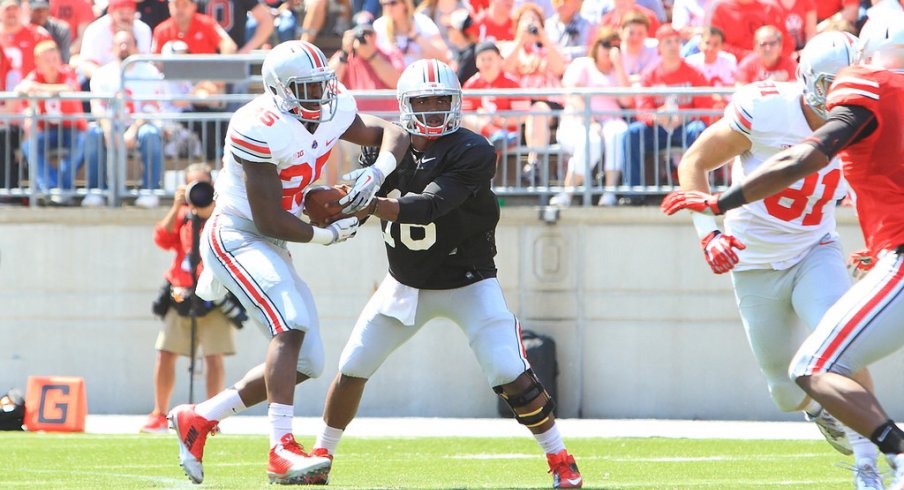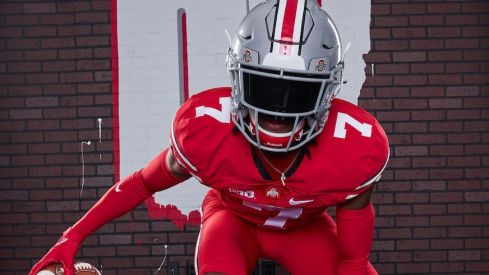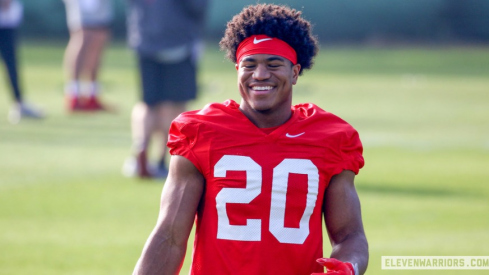With inexperienced quarterbacks and pieced-together offensive lines, the 2014 Ohio State spring game won't be showing up on ESPN Classic anytime soon.
But while Braxton Miller, Doran Grant and many other Buckeye starters watched from the sidelines last Saturday, Urban Meyer and his coaching staff showed us a number of schematic changes that we can expect to see on the field this fall.
Inside-Out
One of the questions I posed last week had to do with the evolution of the running game after the departure of Carlos Hyde. While Hyde’s heir apparent, Ezekiel Elliott, only played one series on Saturday, the offense showed that the Buckeyes have made some adjustments designed to exploit the speed of Elliott and other backs on the perimeter.
From a blocking perspective, Inside Zone appears to still be the scheme of choice, with a dash of Power mixed in. The change for 2014 appears to be in the option game, now including a new wrinkle that gets the running back to the outside. Much like the increasingly popular “Inverted Veer” option built upon the Power blocking scheme, OSU’s latest addition to the playbook gives the quarterback the ball between the tackles.
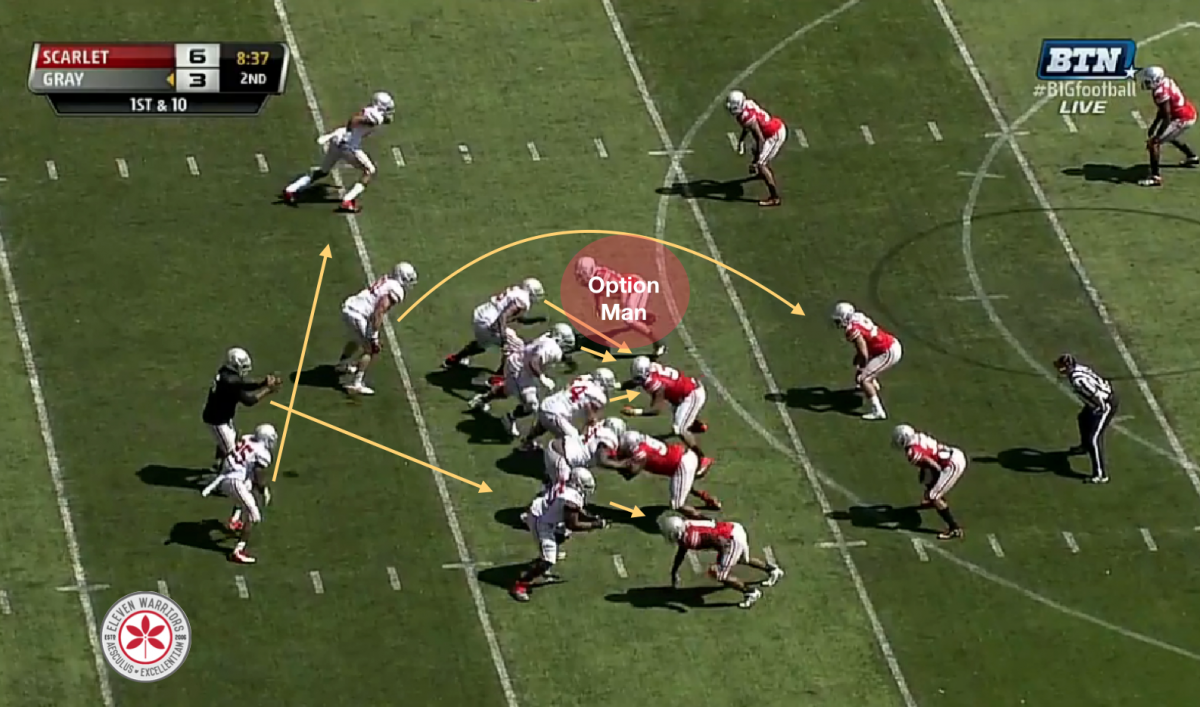
What appears at first like an outside handoff to the running back is actually blocked like any other inside zone play, giving the quarterback the option to give or keep. The key ingredient here is the Arc Block from the Tight End, aimed for the front-side linebacker, leaving the defensive end as the option man. OSU has used an arc block like this in the past, but usually as a lead blocker for Braxton Miller around the edge.
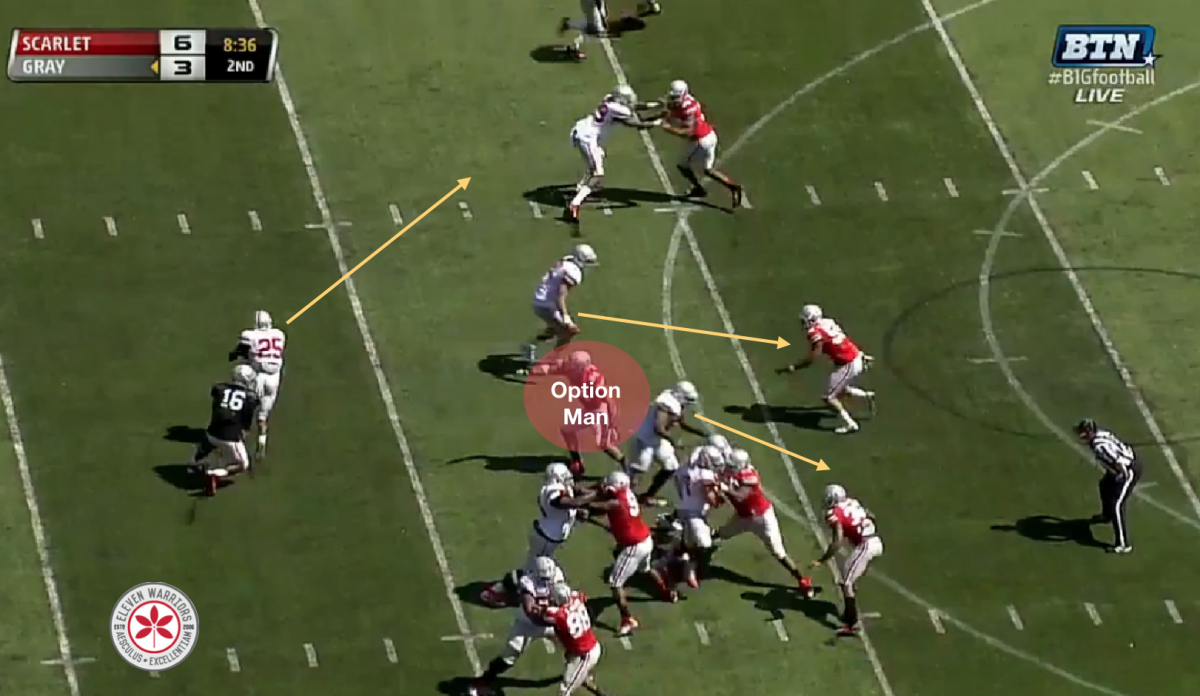
The Gray team ran this play with great success on Saturday, thanks in great part to J.T. Barrett’s ability to properly read the defensive end. Both he and Brionte Dunn exploited the defense for big gains, proving once again that a properly executed option can move the ball against an otherwise dominant defensive line. I fully expect this concept to be seen this fall, not only with Elliott, but also by motioning Dontre Wilson or Curtis Samuel into the backfield.
What doesn’t kill you…
It’s clear that Tom Herman and the other offensive coaches have taken a look at the film of Sammy Watkins running wild through the Buckeye defense in the Orange Bowl. While trying to break in two young, inexperienced quarterbacks, Herman and company filled the game plan with a multitude of wide receiver screens, meant to quickly get the ball to young, athletic players such as Corey Smith, Michael Thomas, and Johnnie Dixon.
Philly Brown was often the target of such passes in the past, but this is not simply a plug-and-play scenario like what we’re seeing with the running game. The OSU coaches showed a number of different blocking schemes and formations from which they ran these screens, and often packaged them with another play on the opposite side of the field. OSU Tight Ends were split out quite often, as they’re now a big part of the passing attack, but also to provide great blocking for these receivers at the point of attack.
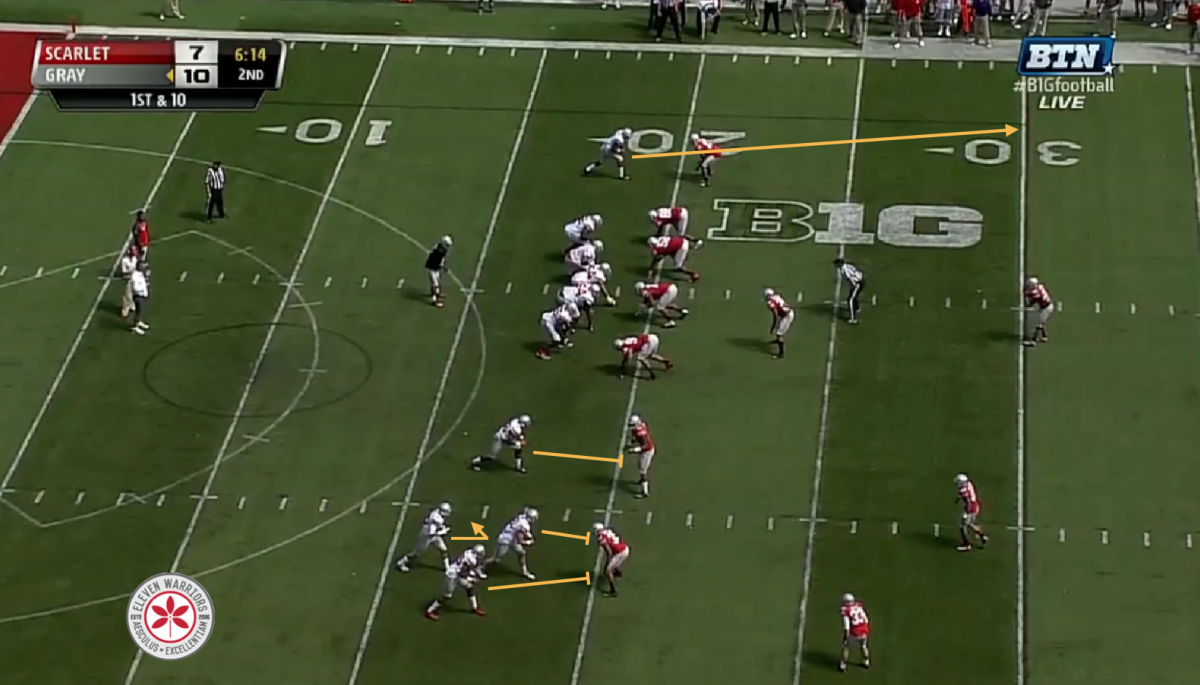
In this 4x1 formation, the Buckeyes have virtually dared the defense to overload that side of the field, leaving the receiver 1-on-1 with the defender on the opposite side.
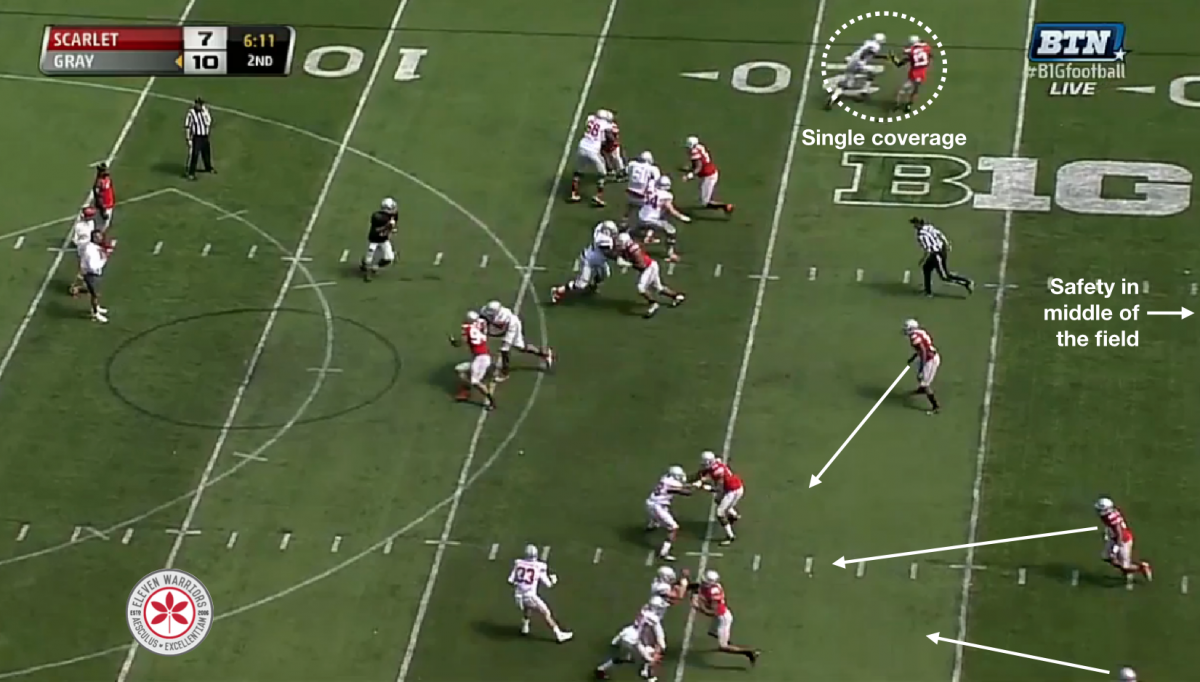
On this play, the defense not only did a poor job of reacting and getting bodies to the screen, but Dixon had good position on his defender, Eli Apple. Unfortunately the pass from Barrett wasn’t accurate and fell incomplete, but with Braxton Miller and Devin Smith running this concept in the fall, the odds of a connecting on a big play are high.
This philosophy can almost be viewed as an extension of the running game though, instead of a team’s vertical passing attack. As we saw in the Orange Bowl, Clemson didn’t have a very successful traditional running game, save a few runs from Tajh Boyd. However, they successfully spread out the OSU defense across the entire width of the field, and quickly got the ball in the hands of their best playmakers.
Forcing a defense to account for the quick screen opens up the deep passing game, just like a good play-action pass might. Knowing the OSU, Clemson, and Texas A&M coaching staffs spent time together this offseason, my guess is we’ve only seen a glimpse of what’s to come in this department.
A Star is (re)born
Ross gave us a great breakdown of the progression we witnessed on Saturday from the Ohio State defense. While we saw a number of changes to the unit from a schematic standpoint, what stood out was not only the quality of play from what we’re calling the “SAM” linebacker position, but the importance of that spot in this defense. Chris Worley and Darron Lee are battling to get the starting nod come the fall, and both made a strong case Saturday in the Horseshoe.
While the rest of the defense stayed pretty consistently in a 4-3 over or under front, with the two cornerbacks pressed on the outside receivers and both safeties lining up deep on nearly every play, the only pieces that constantly changed their alignment were the linebackers. Even then, the MIKE and WILL positions primarily lined up over the B gaps, or just on the outside edges of the tackle box if the offense lined up with 5 receivers.
The SAM ‘backers lined up over the slot, on the edge of the box, pressed up to the line, or as deep as 5-7 yards off. Ash even had these two line up as defensive ends on a couple occasions. Often aligning to the wide side of the field, Worley and Lee became the important “alley” players, assigned to creating problems for the offense when they tried to get the ball on the edge, through screens, sweeps, and swing passes.
For anyone that has paid close attention to the OSU defense during the Jim Tressel era, this should sound a lot like what was required from the “STAR” position. Under former Defensive Coordinator, Jim Heacock, the STAR was the “contain” player against the run, turning the ball carrier back inside. Guys like Jermale Hines and Tyler Moeller were excellent at setting the edge and making plays in this spot.
However, they are also counted on to cover slot receivers in the passing game. With the expansion of spread offenses in the Big Ten, the need to have more traditional defensive backs on the field seemed to take precedence over guys that could consistently make tackles. By last season, the position seemed to have completely morphed into a traditional nickelback, acting as a third corner and becoming a microcosm of an OSU defense backfield that couldn’t consistently stop either the run or the pass.
Worley and Lee came to Ohio State without a defined position, in the classic “tweener” mold. Under Ash, they seem to have found a clear role though, being the Queen on the chessboard and moving around the field. Both showed on Saturday that they are willing and able to make tackles in the open field (Worley led the Scarlet team with 6 solo tackles, while Lee had 4 for the Gray):
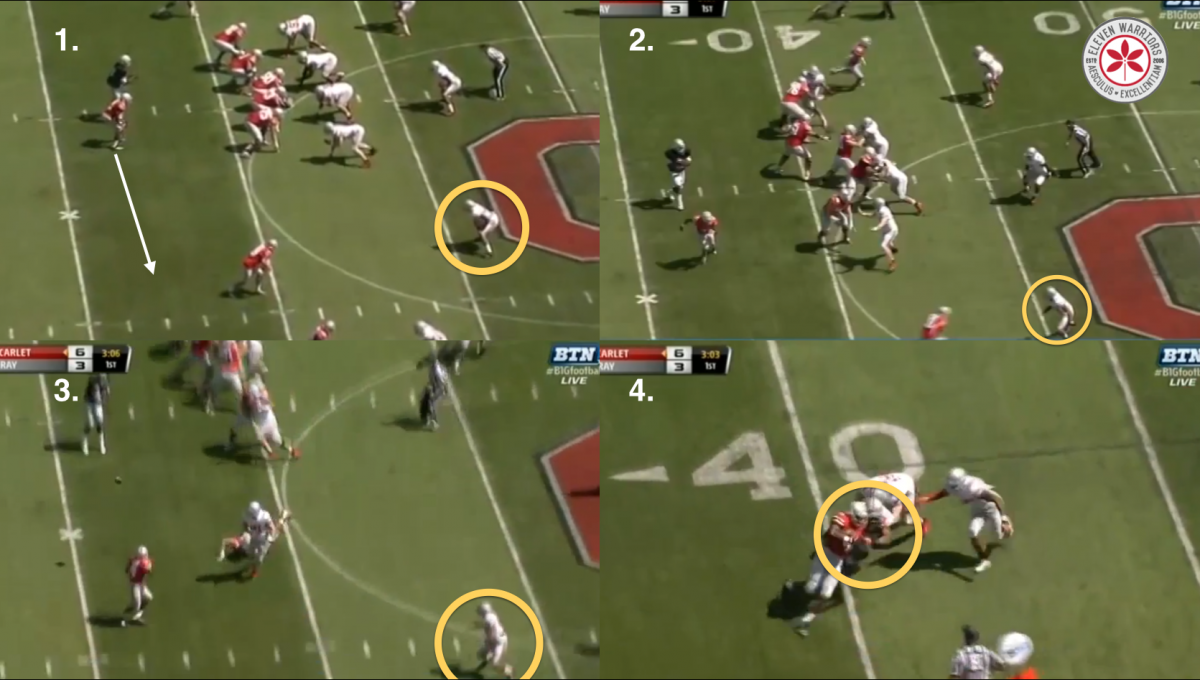
While it’s much too early to say who will end up as the starter, both will be tested in man coverage as the season goes on. Ash showed quite a bit of Cover 1 on Saturday, which left these two in solo coverage on a slot receiver. As more film of the new Buckeye defense becomes available, one can bet that opposing coaches will likely target this position in the vertical passing game.
The good news for Buckeye fans is that both young men seem more than willing to put the STAR position back into the spotlight (sorry, I couldn’t help myself).
